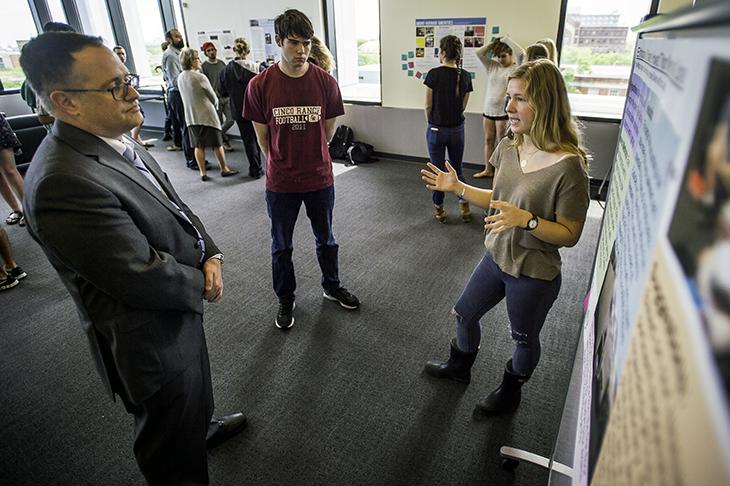Anthropology class looks at student library experience
The internet — and the ubiquitous information students can find there — has certainly changed the way academic libraries support their constituents. But while casual observations and anecdotes might lead to certain assumptions about how libraries fit into contemporary academic life, they aren’t a real substitute for empirical evidence.
For a more systematic approach, Tulane librarians turned to Allison Truitt, an associate professor in the anthropology department, to explore the possibility of using Howard-Tilton Memorial Library as a field site for anthropological research. The goal was twofold: for the library, to get some needed qualitative data about its spaces and services; for the students, to obtain hands-on experience in documenting human cultures and environments. Truitt readily agreed. Working with social sciences librarian Adam Beauchamp, she assigned students in her Cultural Anthropology class to use ethnographic research skills to document the student experience at Howard-Tilton.
“We think we know how a library is supposed to be used,” Truitt told her class. “But you’re the experts on the student experience, and by listening to you, perhaps we can have a better understanding of your perspective.”
“You’re the experts on the student experience, and by listening to you, perhaps we can have a better understanding of your perspective.”
Allison Truitt
Students observed library users and kept photo diaries of their experiences. Last Thursday (April 14), they presented their findings during a poster session on the library’s new fifth floor. Many library staff attended the poster session, including David Banush, dean of libraries at Tulane, who strongly supported the project.
“This was an encouraging learning experience,” Banush said of the students’ research. “I’m hoping we can use what we’re hearing today to inform brick-and-mortar changes as well as engage other parts of the Tulane community. We recognize that our spaces and services need to evolve to serve future students and scholars as effectively as possible. This approach really engaged the students and will help us tremendously.”

